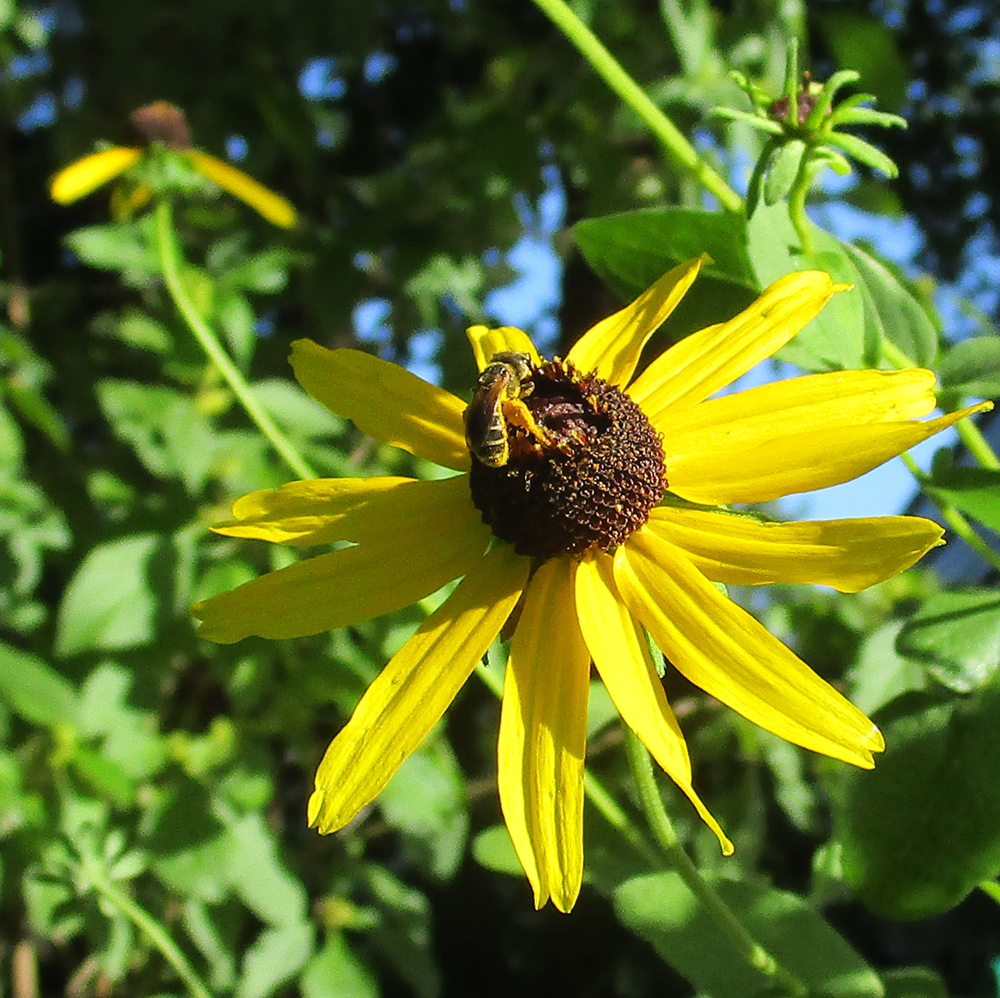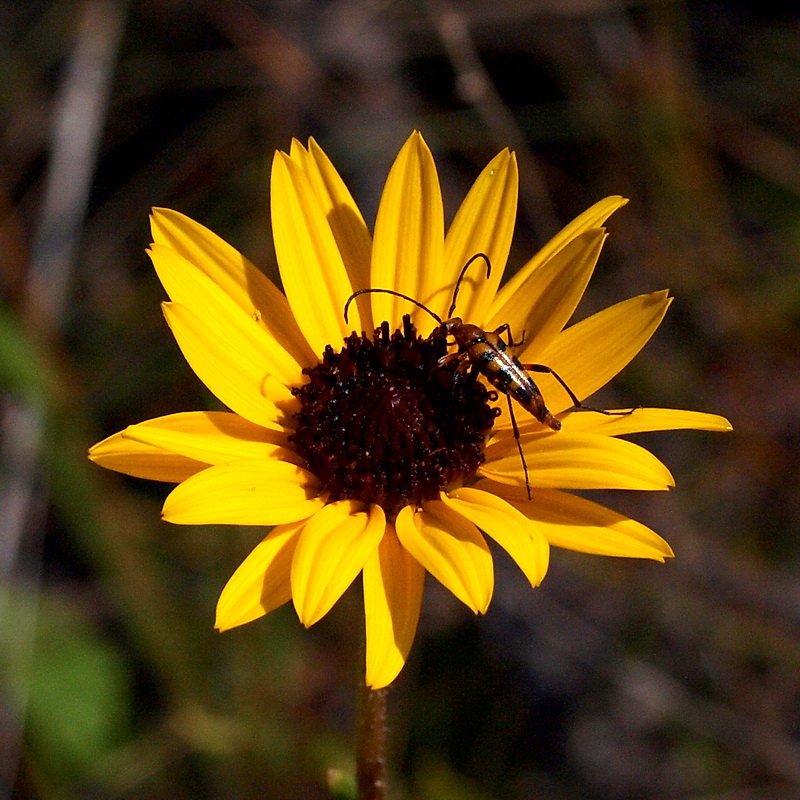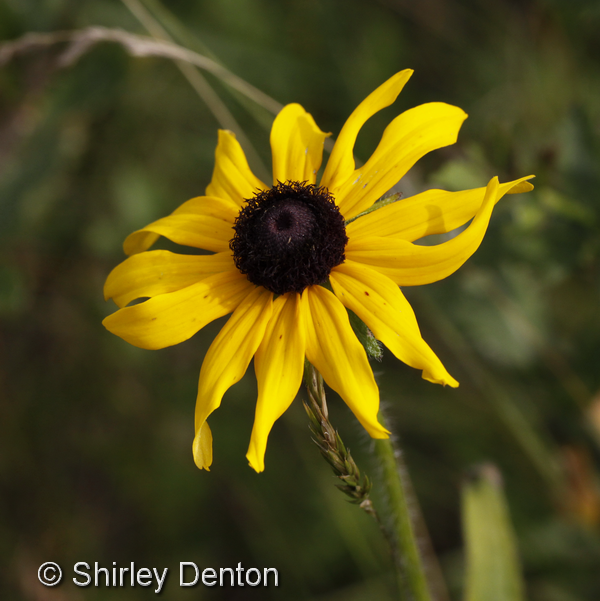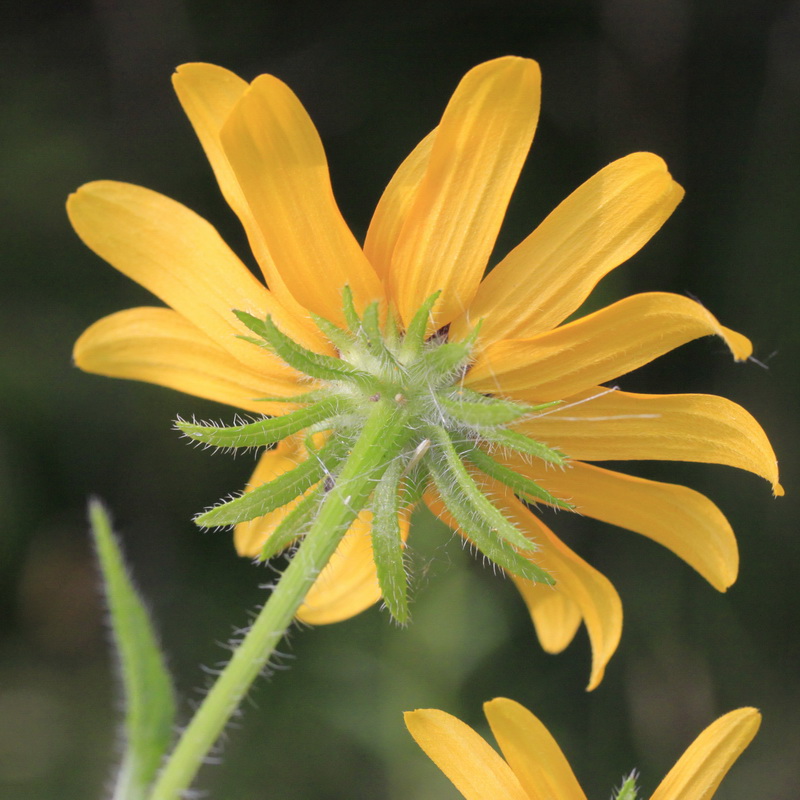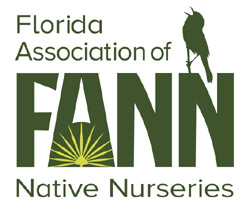Rudbeckia hirta
Photographs belong to the photographers who allow use for FNPS purposes only. Please contact the photographer for all other uses.
Black-eyed Susan
Asteraceae
Plant Specifics
| Form: | Flower | |
| Size: | 2-3 ft tall by 1-2 ft wide | |
| Life Span: | Short-lived perennial | |
| Flower Color: | Yellow | |
| Fruit Color: | Brown | |
| Phenology: | Blooms spring-fall. | |
| Noted for: | Showy flowers |
Landscaping
| Recommended Uses: | Wildflower gardens, roadside wildflowers, meadows. | ||||||||||||||||||||||||||||||||||||||||||
| Propagation: | Seed. While this is a short-lived perennial, it is usually grown as an annual. Readily self-seeds. | ||||||||||||||||||||||||||||||||||||||||||
| Availability: | Seed | ||||||||||||||||||||||||||||||||||||||||||
| Light: | Full Sun | ||||||||||||||||||||||||||||||||||||||||||
| Moisture Tolerance: |
always floodedextremely dry |
||||||||||||||||||||||||||||||||||||||||||
| (Somewhat moist, no flooding ----- to ----- Very long very dry periods) | |||||||||||||||||||||||||||||||||||||||||||
| Moisture Tolerance: | Somewhat moist, no flooding ----- to ----- Very long very dry periods | ||||||||||||||||||||||||||||||||||||||||||
| Salt Water Flooding Tolerance: | Not salt tolerant of inundation by salty or brackish water. | ||||||||||||||||||||||||||||||||||||||||||
| Salt Spray/ Salty Soil Tolerance: | Low/no tolerance of salty wind or direct salt spray | ||||||||||||||||||||||||||||||||||||||||||
| Soil or other substrate: | Sand | ||||||||||||||||||||||||||||||||||||||||||
| Soil pH: | Adaptable | ||||||||||||||||||||||||||||||||||||||||||
Ecology
| Wildlife: |
Seeds eaten by small birds such as finches. | |
| Insects: | Attracts bumble bees, butterflies Larval host for the silvery checkerspot, found only in extreme north Florida. | |
| Native Habitats: | Predominantly ruderal. Roadsides and waste places. |
Distribution and Planting Zones
Natural Range in Florida
USDA Zones
Suitable to grow in:
10A 10B 8A 8B 9A 9B
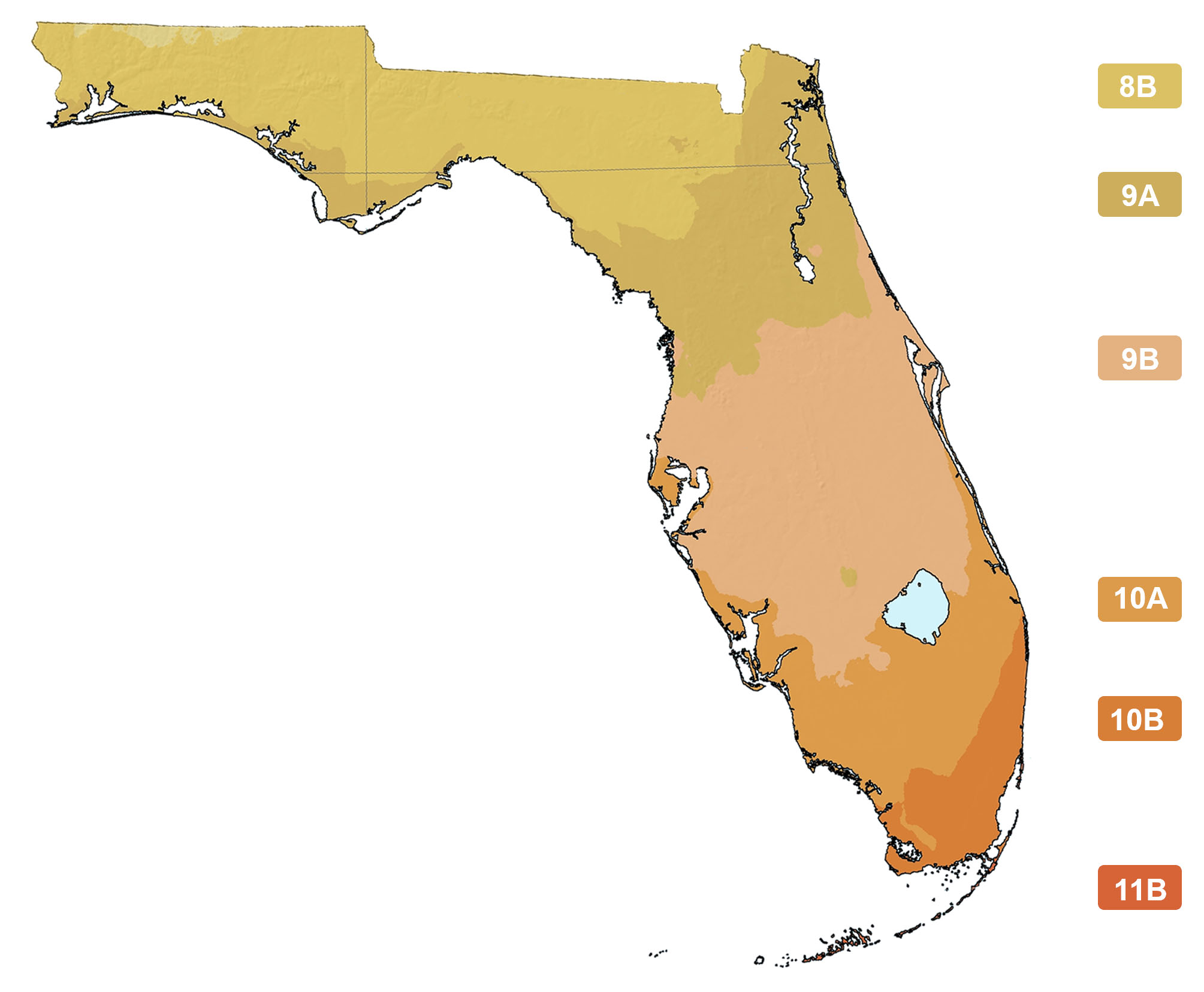
USDA zones are based on minimum winter temperatures

